
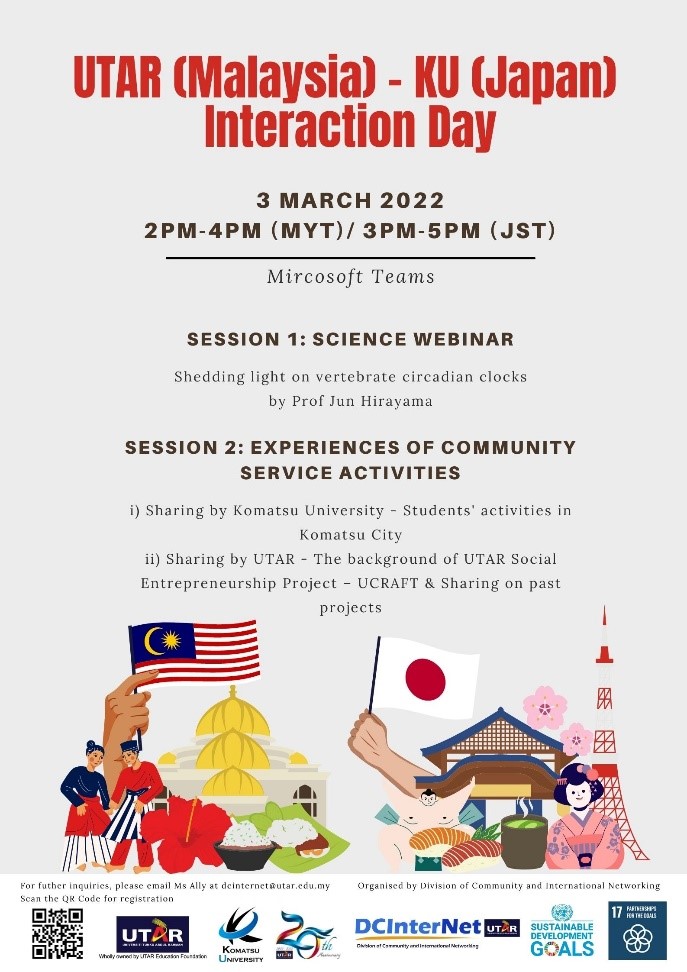
Poster of the event
In conjunction with the celebration of UTAR’s 20th anniversary, the Division of Community and International Networking (DCInterNet) jointly organised a global virtual event titled “2022 UTAR (Malaysia) - KU (Japan) Interaction Day” with Komatsu University, Japan on 3 March 2022 via Microsoft Teams. The emcee of the event was UTAR DCInterNet Senior Assistant Manager Chin Sau Lai. The event was moderated by UTAR Faculty of Science (FSc) Department of Biological Science lecturer Dr Chow Yit Lai.
The event consisted of two sessions; session one featured a Science Webinar titled Shedding Light on Vertebrate Circadian Clocks and session two featured Experience of Community Service Activities, which was presented by students from both UTAR and Komatsu University.
Also present were Komatsu University Vice President Prof Yoshimasa Yokogawa and Komatsu University Faculty of Intercultural Communication Dean Prof Ray Iwata.
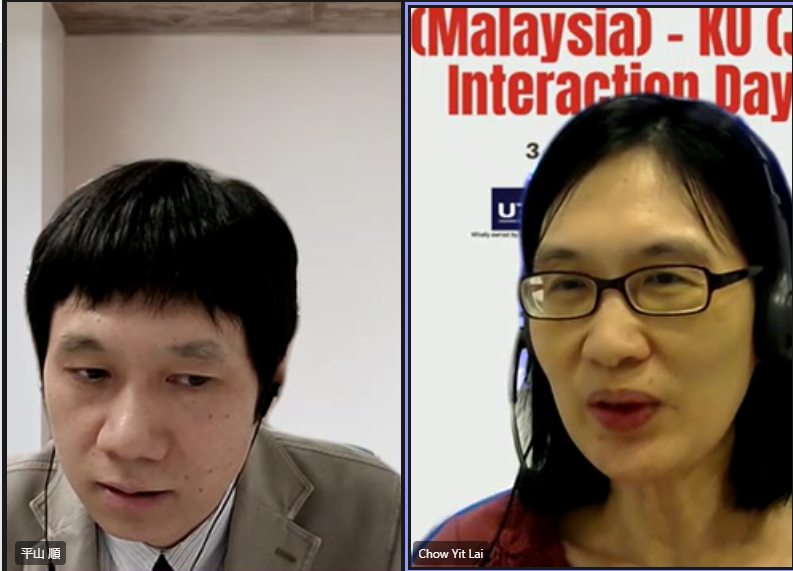
From left: Prof Hirayama and Dr Chow
Invited to speak in the first session was Komatsu University Department of Clinical Engineering Prof Jun Hirayama (平山順). In his session, Prof Hirayama talked about his research area on molecular mechanisms regulating circadian clocks. He said, “The circadian clock is a biological timer with 24 hours periodicity, which helps with homeostasis maintenance. It is a natural timing process that regulates sleep or sleep-like (resting) behaviour. Circadian clock is an important biological event for organisms to adapt their physiologies to the environment on earth. The disruption of circadian clocks is linked to a variety of diseases, including sleep disorders, diabetes, obesity and metabolic syndrome.”
According to Prof Hirayama, the circadian clock is sensitive to light. He explained, “The circadian clock is a biological clock that exists in most organisms. Your circadian rhythm is influenced by things on the outside like light and dark, as well as other factors. Your brain receives signals based on your environment and activates certain hormones that alter your body temperature and regulate your metabolism to keep you alert or draw you to sleep. In my research, I use zebrafish as an experimental target to examine how light influences the circadian clock because humans and zebrafish have 80% genetic commonality and they have the same circadian clock system. It has been proved in many research that circadian is controlled by genes.”
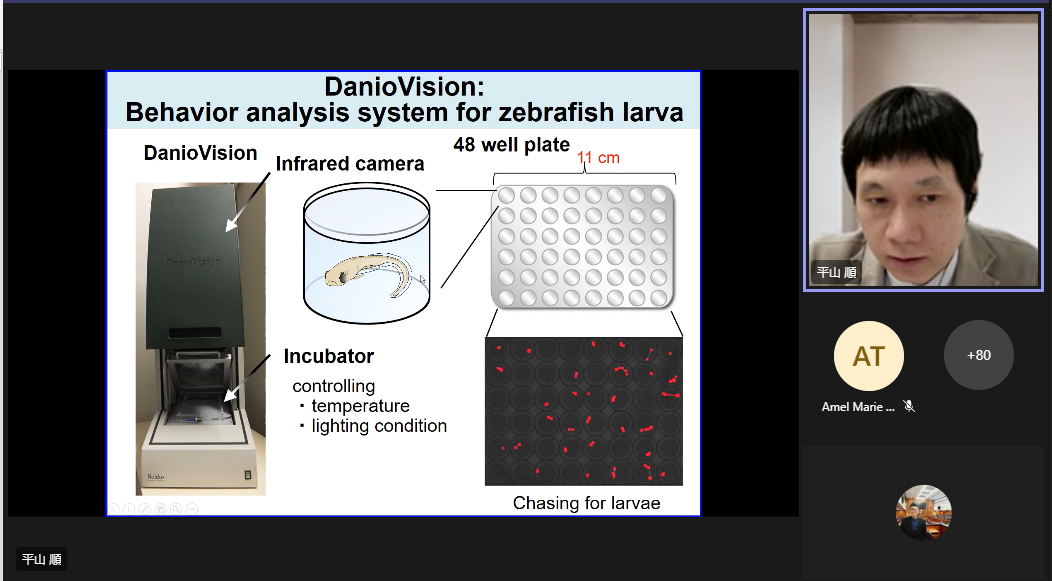
Prof Hirayama explaining how zebrafish larva and incubators function in his research
The session also saw Prof Hirayama providing an overview of the function and regulation of the circadian clock in a vertebrate. According to Prof Hirayama, his research aims to elucidate the associations between circadian clock dysregulation and diseases using the zebrafish (Danio rerio) as a model organism.
Session two was kick-started by Komatsu University student Mana Furusawa on the topic Our Activities for Deepening Children’s Understanding of Komatsu City. She said, “In Komatsu city, there are after-school centres for those elementary school students aged 7 to 12 years old who cannot return home after school because their working families are not at home. Our community project was done for the students in an after-school centre to deepen our understanding of Komatsu city. We were supposed to interact with the students face-to-face but we were unable to do it due to the COVID-19 pandemic. So, we went to different places in Komatsu city to take videos. The videos were then edited using a smartphone. The edited videos featured an introduction to Komatsu city along with some quizzes. The videos were then sent to an after-school centre in Komatsu city as an assessment to interact with the students.”

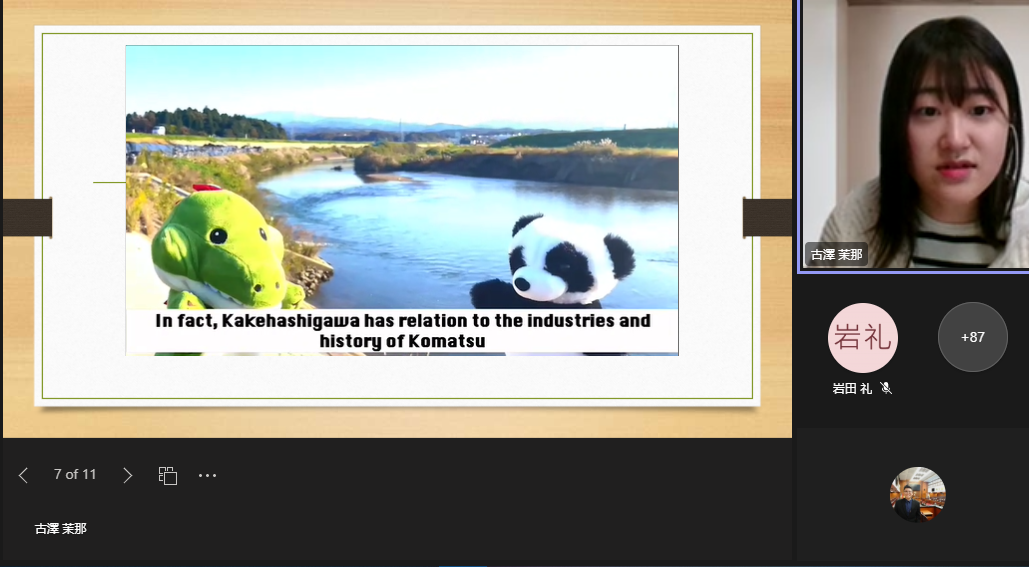
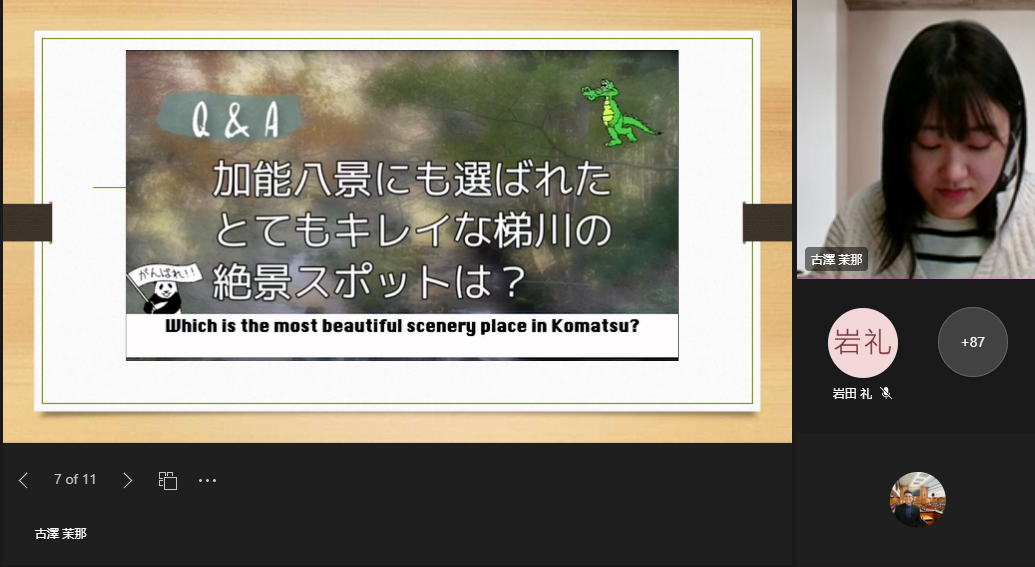
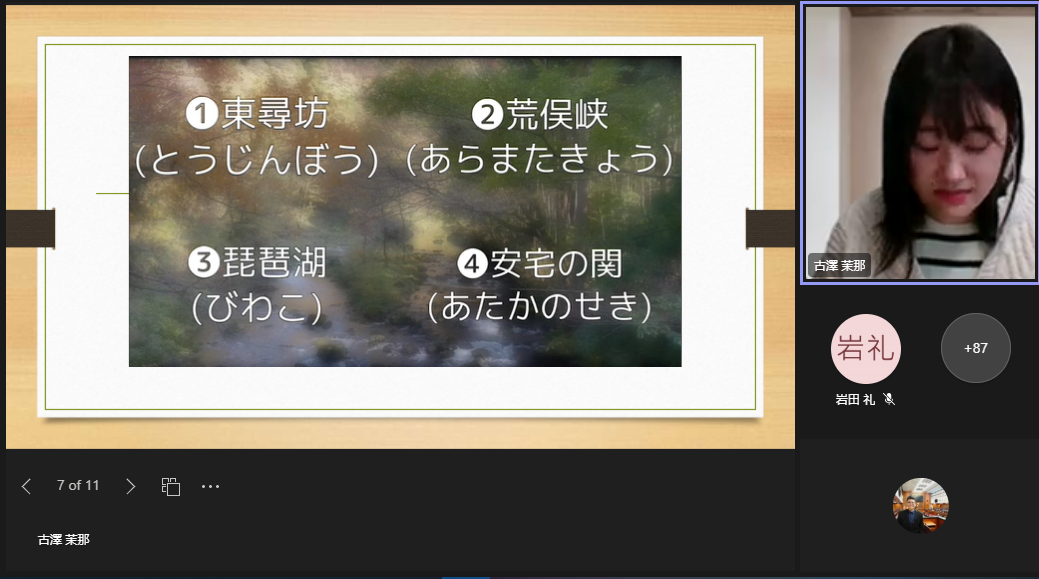
Mana played the video while explaining its content to the participants
The session was followed by another presentation delivered by Komatsu University students Yukina Fujita and Mahiru Yagi on the topic Marketing of Kutaniyaki (Kutani ware) Industry. The Kutani Ware’s production areas are located mainly in Nomi city and Komatsu city since 1655. According to the students, Kutani can be sold all over the world because people are fascinated by the combination of traditional design and friendly use of the product. In order to make the industry sustainable, Komatsu University is looking for collaboration partners to promote Kutani.
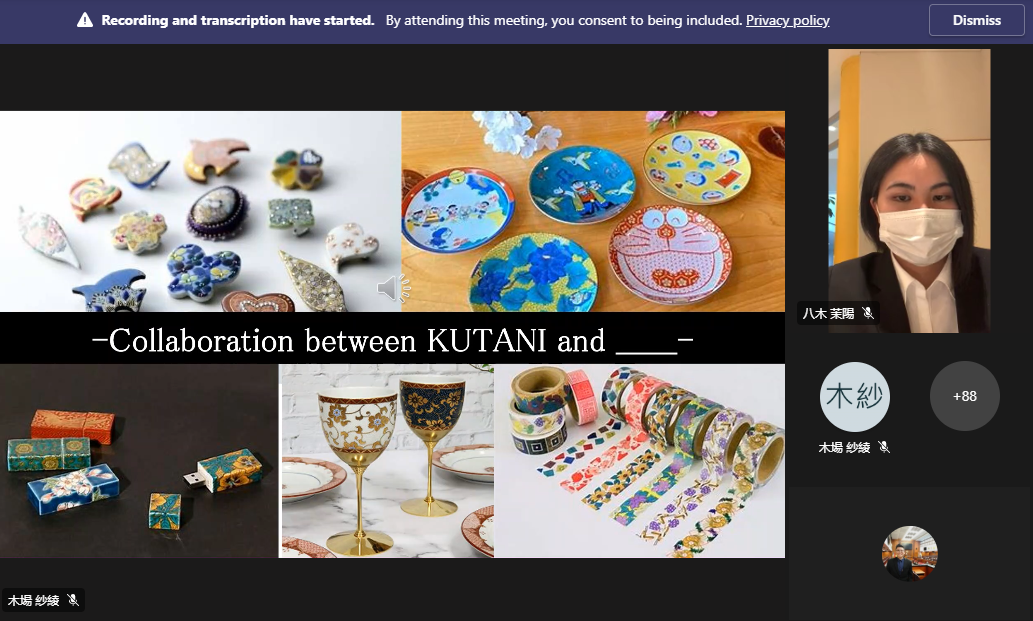
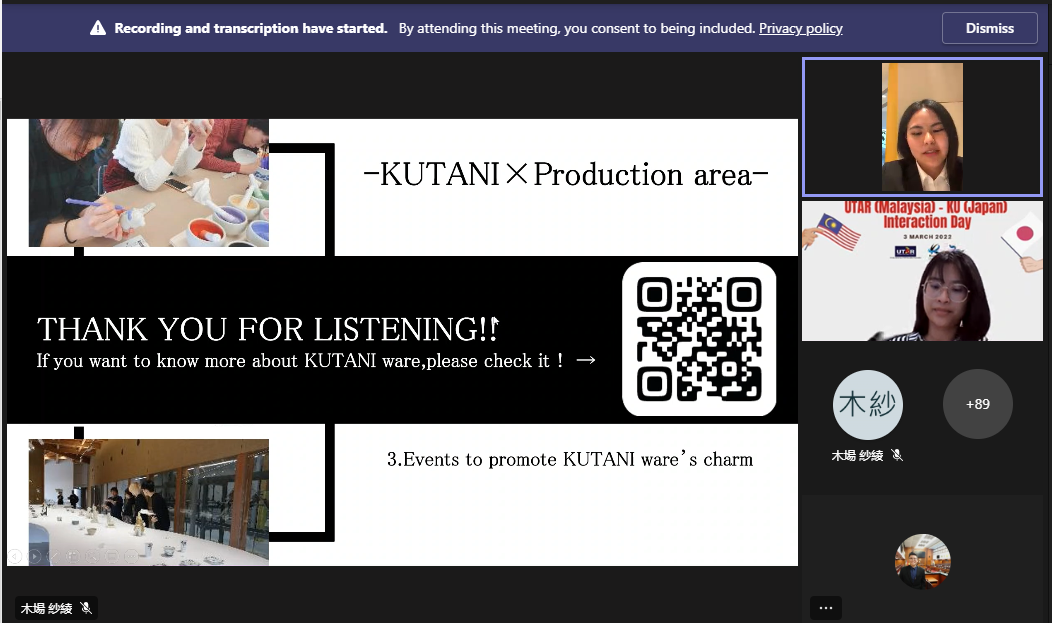
Participants were invited to scan the QR code to know more about the Kutani products
On behalf of UTAR, UTAR international student Jode Marie Cabatana Masbate from the Philippines was invited to speak on UCRAFT Sharing: UTAR Art, Craft and Design. She said, “The UCRAFT Sharing is a community project aimed to assist underprivileged communities or non-governmental organisations (NGO) to set up a micro-business that mainly sells arts and crafts products. In addition, this project is planned to create a positive impact on the quality of life of the marginalised community/NGOs through students’ efforts in acquiring knowledge and practical skills in art, craft and design of products. It also helps students gain experience in entrepreneurial skills through mini business activities.”
She added, “There are two methods to conduct the project. For the first method, the project hires the community as an employee. The participants will make the crafts for sale and get wages in return. The wages are either calculated based on an hourly rate or per day. For the second method, students will collaborate with the community as a partner. The community can actually take over the project and start it as a business.”
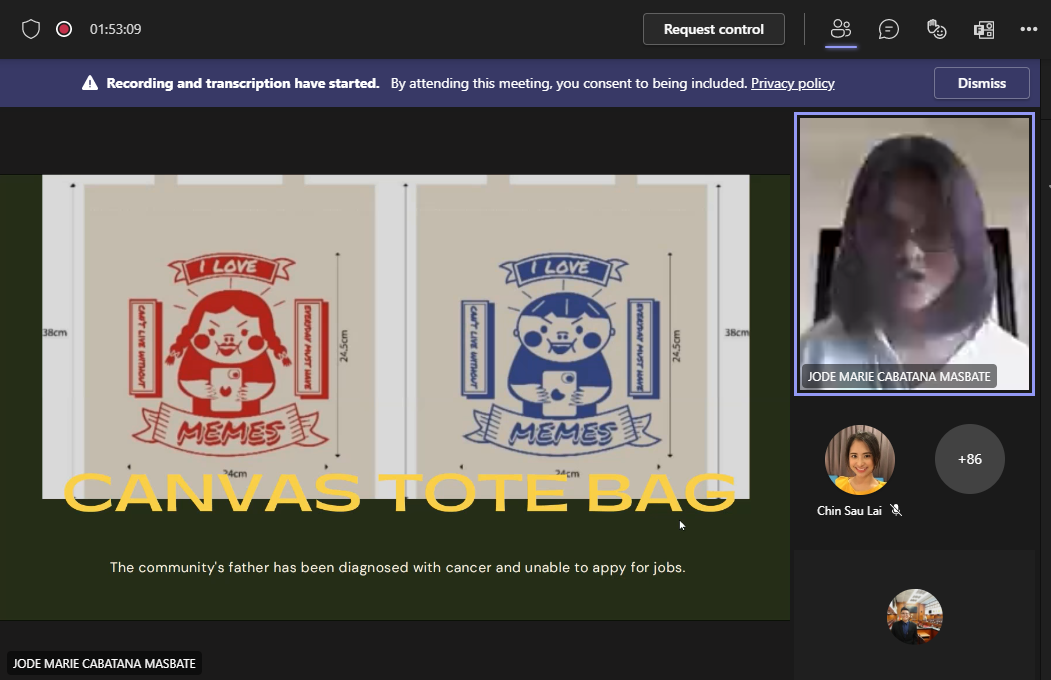
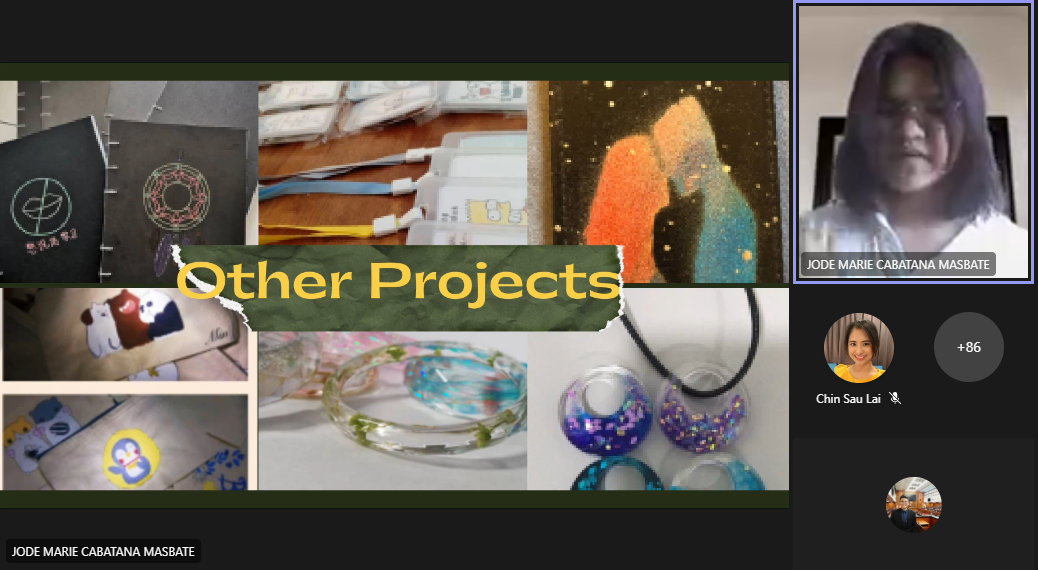
Jode Marie sharing the UCRAFT Sharing project organised by UTAR
Toward the end of the webinar, UTAR Kampar Campus Department of Soft Skills Competency (DSSC) lecturer Mah Siew Huei was invited to introduce several community projects organised by UTAR. She said, “We actually cooperated with many industries and NGOs. ‘Samurai Summer’ is one of the projects successfully conducted by the Japanese interns at UTAR. The event attracted over 500 participants. The participants were given insights into contemporary Japanese culture at UTAR Kampar Campus. In order to boost participants’ understanding on the day-to-day living in Japan, a creative forum shedding light on topics such as Japanese hospitality, education, working and living environment was also held.”
She added, “Another successful community project is the ‘New Village Collaborative Project’, held by UTAR in collaboration with local foundations, companies, and foreign partnering universities. The activities involve social study, research, cultural exchange, sport-friendly matches and beautification projects for schools and homes. The new village community project was aimed to study the social and economic development in the new villages; collect information about the histories (narratives) and cultures of the new villages; identify the community assets of the new villages and generate possible social entrepreneurship and community development ideas for the new villages. One of our industrial partners is the National University of Singapore (NUS). We collaborate to conduct research on new villages in Malaysia. Students would stay in the new village for a few days. They will talk to the locals to figure out what they can do to help the locals. So far, the students have visited houses in the local community and organised different inter-cultural activities. We have also organised motivational and tuition programmes for citizens staying in the new village. The new villages that we take as the venue of our community project can be in any place in Malaysia.”
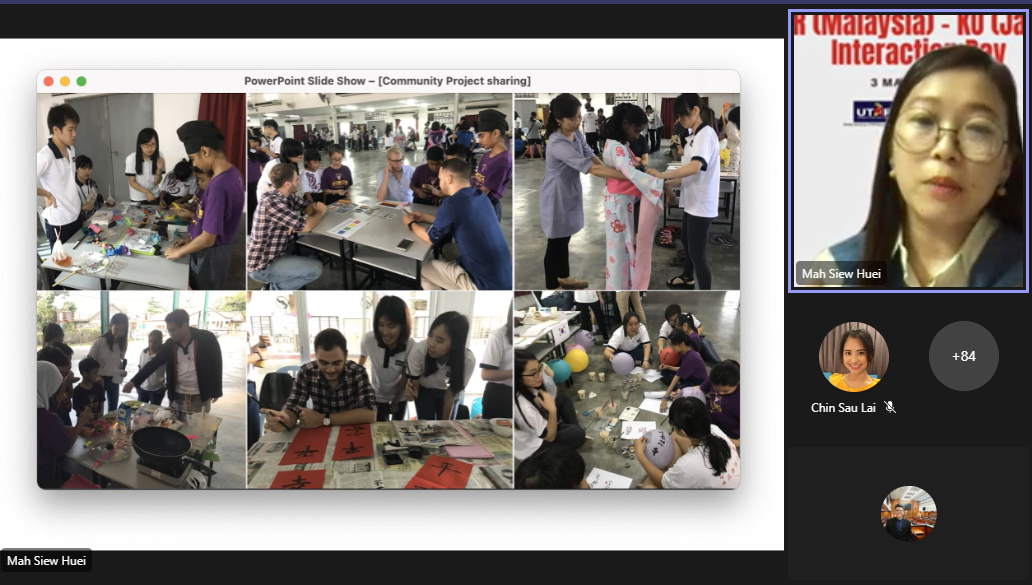
Mah sharing the New Village Community work projects
The webinar saw an active interaction between the speakers and the participants. It ended with group photography and Q&A sessions.
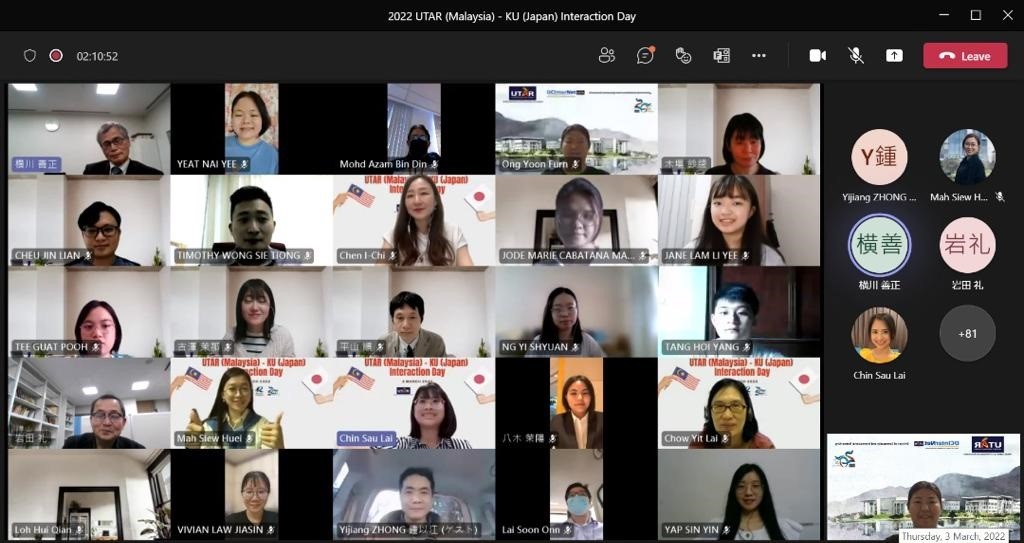
Group photo during the event
© 2022 UNIVERSITI TUNKU ABDUL RAHMAN DU012(A).
Wholly owned by UTAR Education Foundation (200201010564(578227-M)) LEGAL STATEMENT TERM OF USAGE PRIVACY NOTICE